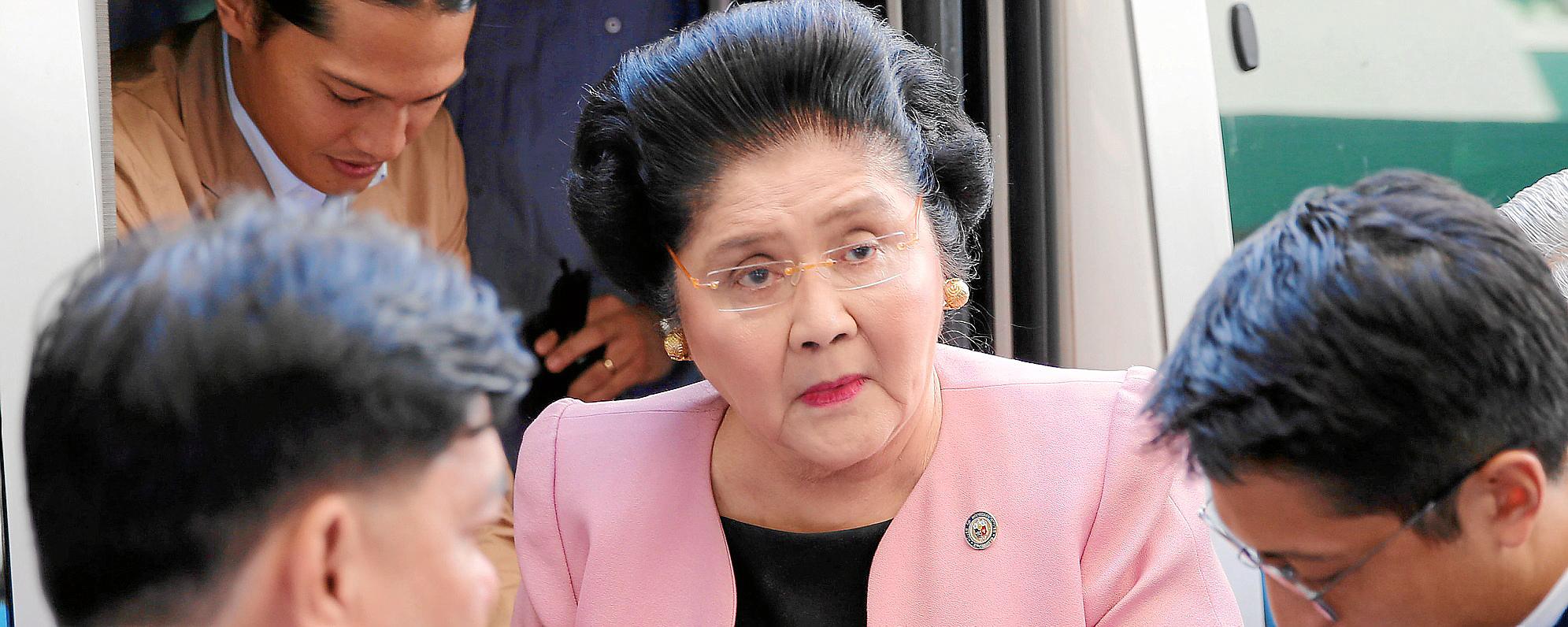Although she has faced dozens of corruption charges in her own country and in the United States – and even been convicted on several occasions and given prison sentences totalling 77 years – she hasn’t spent a single day in jail in her life.
How has she got away with it? The answer, I suspect, is through further graft and corruption. You can get away with a lot in a place like the Philippines, even in the appeal court, if you have access to untold riches.
I met her when she was charged in New York in 1988, along with Adnan Khashoggi, the Saudi arms dealer, with racketeering, conspiracy, fraud and obstruction of justice. The case was all about those prime sites in Manhattan, including the Woolworth Building, she had allegedly bought with her country’s money, assisted by Khashoggi.
During her husband Ferdinand Marcos’s second Presidential term, he was frequently ill and she became increasingly powerful in her own right. She became a Minister and Governor of Manila province.
She took her husband’s place on many overseas visits, making friends with US Presidents Johnson, Nixon and Reagan. She also met leaders like Gaddafi in Libya, Saddam Hussein in Iraq, Castro in Cuba and Tito in Yugoslavia, doing trade deals for her country and charming everyone with her style and intelligence.
When I wanted to meet her, I got access first to Khashoggi, who was an associate of Tiny Rowland, then chairman of my newspaper, The Observer. I had dinner with AK, as he was known, in New York on the eve of the court case, about which he seemed completely unruffled. When I asked if he could get me an interview with Imelda, he promised to do his best.
Eventually he said I could travel with her on his private plane from New York to Dallas, where he and Imelda were guests at a party hosted by Doris Duke, the tobacco heiress. I couldn’t go to the party, but I could talk to her on the plane. Doris Duke had put up $5m. for Imelda’s bail.
Imelda wasn’t worried about the court case either – justifiably so, as it turned out, as both were acquitted for lack of convincing evidence. When I asked about her extensive property portfolio in Manhattan, she said she had been offered the Empire State Building as well, but turned it down for being “too ostentatious.”
When I plucked up the courage to ask her where her money had come from, if not from the coffers of her government, she replied airily: “We practically owned everything in the Philippines, from electricity, telecommunications, airlines, banking, beer and tobacco, newspaper publishing, television stations, shipping, oil and mining, hotels and beach resorts, down to coconut milling, small farms, real estate and insurance.”
She also claimed that much of her declared $22m fortune came from “Yamashata’s Gold,” money looted by the Japanese in World War II and left in the Philippines. Imelda herself came from an aristocratic family called Romualdez which had fallen on hard times. The charm and popularity of the woman who became known as “the iron butterfly” were important assets in Ferdinand’s political career. He called her his “secret weapon.”
She was much bigger than I had expected. When she caught me looking at her shoes on the plane, she exclaimed: “Everybody talks about my shoes. What they don’t understand is that every maker of shoes in the Philippines sent me their new brands. Most of them were too small for me anyway.”
When we got on to current politics in the Philippines, I asked her it was true, as reported, that she wanted power for herself. She looked at me for a long time, then smiled conspiratorially and whispered: “No, Mr Donald, I do not seek power. I seek love.” Had I not been accompanied by an Observer photographer as we flew at 50,000 feet, I might have felt a bit nervous!
In fact, she did seek power, trying several times to be a candidate in Presidential elections and succeeding in becoming a Congresswoman. The catalogue of criminal charges against her made it impossible for her to run for her husband’s old job.
A word has been coined to describe her conspicuous consumption: “Imeldific.” When she fled the Malacanagang Palace in Manila with the fall of the Marcos regime in 1986, she left behind 15 mink coats, 508 gowns, 888 handbags and a pile of shoes that was estimated at 7,500 but she claims was only 1,600. She was allowed back into the Philippines when her husband died in 1989.
There are dozens of stories about her wild spending sprees. On one overseas trip she spent 3.3m on dresses. She spent $2,000 on chewing gum at San Francisco International airport and once made her private plane make a mid-air U-turn because she had forgotten to buy cheese in Rome.
Her jewellery forms three separate collections, valued at $21m, with a single pink diamond valued at $5m. She has an art collection comprising 175 of the world’s great paintings, including works by Michaelangelo, Raphael, Botticelli, Canaletto and Monet. Her shoes are housed in two museums in the Philippines.
She was once described by an admirer as “Marie Anoinette, with shoes.” Happy birthday, Imelda. What a life! Imeldific is the only word to describe it.

